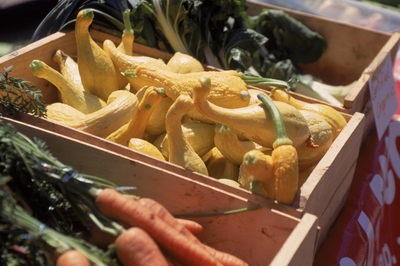At the Saturday Portland Farmers Market, one of the largest on the West Coast and one of the first to open each year, feed prices have pushed the cost of eggs to almost $6 a dozen, up from $4.50 last year, and many other prices have nudged higher.
STATEWIDE At the Saturday Portland Farmers Market, one of the largest on the West Coast and one of the first to open each year, feed prices have pushed the cost of eggs to almost $6 a dozen, up from $4.50 last year, and many other prices have nudged higher.
But that didn’t keep the attendance at the April 12 market at Portland State University from reaching 13,000 people, equal to the summer peak figure last year.
Whether it’s fuel-conscious consumers staying close to home or shoppers seeing farmers markets as an affordable luxury, as the season opens during an economic downturn, enthusiasm for local markets appears to outweigh concern over the higher food prices.
Farmers market expert Larry Lev, an Oregon State University professor, says he surveyed the Hillsdale winter market in March and asked what people were spending vs. 2005. In 2005, the average was $19.50 and this year it was $31.
“They were coming prepared to buy increased quantities,” he says. “There is more serious shopping going on. It’s gotten past the phase of coming just to drink a latte and buy a few tomatoes.”
The same holds true for community supported agriculture (CSA) farms, which offer produce subscriptions. At Sauvie Island Organics, the cost of a produce box is $845 for 29 weeks; last year it was $790. At Gathering Together Farms in Philomath a produce box is $500 for 22 weeks this year versus $450 last year. Increased fuel cost was cited by both farms as the reason for the increase.
Despite this, Shari Raider, who owns Sauvie Island Organics, says demand has increased despite the rising prices. She says she’s put two more acres into production this year and the number of community shares (subscriptions) has risen to 250 this year from 200. And there’s a waiting list.
“All the CSAs have waiting lists, and all have raised prices,” Raider says. She thinks it’s because consumers have decided to use their dollars to support the local economy — along with getting fresh, nutritious food — even though they have to pay more.
Lev will be watching how markets thrive as they begin to widely open around the state this month during the downturn. He predicts existing markets will do well, but new vendors might be reluctant to take on new markets because high fuel costs and tight labor availability might make it hard to fulfill commitments.
“Farmers markets have found their niche in people’s lives,” says Lev. “In one sense it is more expensive than going to Safeway, but in another sense, people can afford it.”
ROBIN DOUSSARD



